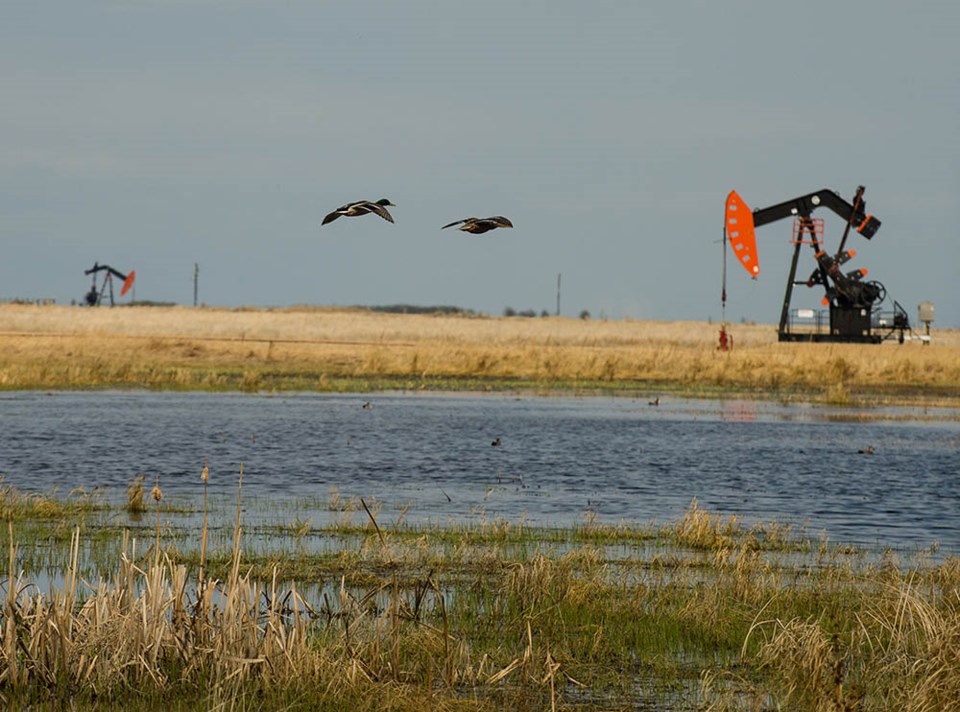The world is awash in crude oil, causing one of the largest oil shocks in history.
This is happening as Saudi Arabia and Russia began an oil price war just as the COVID-19 crisis caused the greatest demand destruction in decades.
But President Donald Trump tweeted on April 2 that he was doing something about that.
That morning Trump tweeted, “Just spoke to my friend MBS (Crown Prince) of Saudi Arabia, who spoke with President Putin of Russia, & I expect & hope that they will be cutting back approximately 10 Million Barrels, and maybe substantially more which, if it happens, will be GREAT for the oil & gas industry!
“.....Could be as high as 15 Million Barrels. Good (GREAT) news for everyone!”
It is not clear if he meant a one-time absolute 10 or 15 million barrels, or production of 10 to 15 million barrels per day on an ongoing basis. I’m taking it as barrels per day.
Before the oil price war and COVID-19 crisis hit, global production of oil was hovering around 100 million barrels per day. Saudi Arabia had said it was going to flood the market with an additional 2 million barrels per day, and Russia said it would add 500,000 barrels per day. Then the United Arab Emirates said it, too, would add a million barrels per day.
As I often point out, the difference between $100 per barrel and $30 per barrel is two million barrels per day of global production. So they were going to slam an already weak market, flooding it with oil and destroying prices.
As the supply side went nuts, the demand side collapsed.
In the month of March since those announcements in late February, entire economies have all but shut down, with nations like Italy, Spain, France, Canada much of the United States telling their populations to stay home and most businesses to close down. The result has been a tremendous decline in oil consumption as most planes and automobiles have stopped moving.
A few hours after the presidential tweet, total worldwide cases of COVID-19 hit 1 million people. In the days hence, it has climbed roughly 100,000 per day, although there seemed to be a slight slowing by the end of the weekend. Instead of rolling over another 100,000 cases by the evening of April 5, it did that closer to noon the next day.
And the world’s largest oil market is also С����Ƶ hit the hardest by COVID-19. The U.S. blew past Spain and Italy and as of April 6 at noon, had 352,000 cases. That’s more than the combined total of Italy, Spain, and most of Germany, the next three hardest hit nations.
This means that since there is no medical therapy just yet, no drug, no working vaccine, the only thing doing any good is putting everyone basically on house arrest. That simply has to have tremendous impact on oil consumption, probably more than most current projections.
This means we, as Canadian oil producers, will have to cut supply to maintain producible prices, indeed, almost any price that’s above essentially zero, or “no bid.” We have to cut production because we are very rapidly running out of places to store our produced oil.
This means shut-ins of enormous swaths of Canadian production. Since we didn’t build export pipelines to the coasts, and the U.S. isn’t going to need a large percentage of our oil, we have no other choice. If we could have sent two million barrels per day to tankers on our coasts, we could have at least had the option to sell to other nations, or store oil on tankers. But we can’t, so we won’t.
Shutting in production is not an easy decision. It’s not like turning off your car when you get home, where you jump in, fire it up, and nothing changed from before.
When you shut in a well for a lengthy time, it may not come back on like it did before. It might not even come on at all. Each well has its own personality. There is some production you simply can’t shut in. Corrosion can take over if a well is shut in for a lengthy period. But some wells will load up and produce more after it’s been down for a while.
Thermal heavy oil production, such as steam assisted gravity drainage (SAGD), commonly used in the Lloydminster area, in particular, doesn’t just turn on and off with ease.
Then there’s the giant oilsands mines around Fort McMurray. These things don’t have a simple on/off switch.
And when you do shut in production, you also cut off your revenue stream. Your property taxes to the RMs didn’t end, nor did your power bill. You might be able to cut large amounts of your labour force, but not all. The taxman still wants to be paid.
But you won’t be paying royalties on the oil you don’t produce. And that means the province, and the freehold mineral rights owners, are out, too.
It seems that Alberta may be joining talks with OPEC+ later this week. Are we getting in bed with the people who chose this time to hurt us? Do we have much choice? Does Canada and the U.S. form its own oil cartel, and say to hell with market forces? Where does Saskatchewan fit in this?
This month will be the largest oil disruption since the oil embargo of the 1970s.
It’s going to be a rough ride.
��
Brian Zinchuk is editor of Pipeline News. He can be reached at [email protected].




